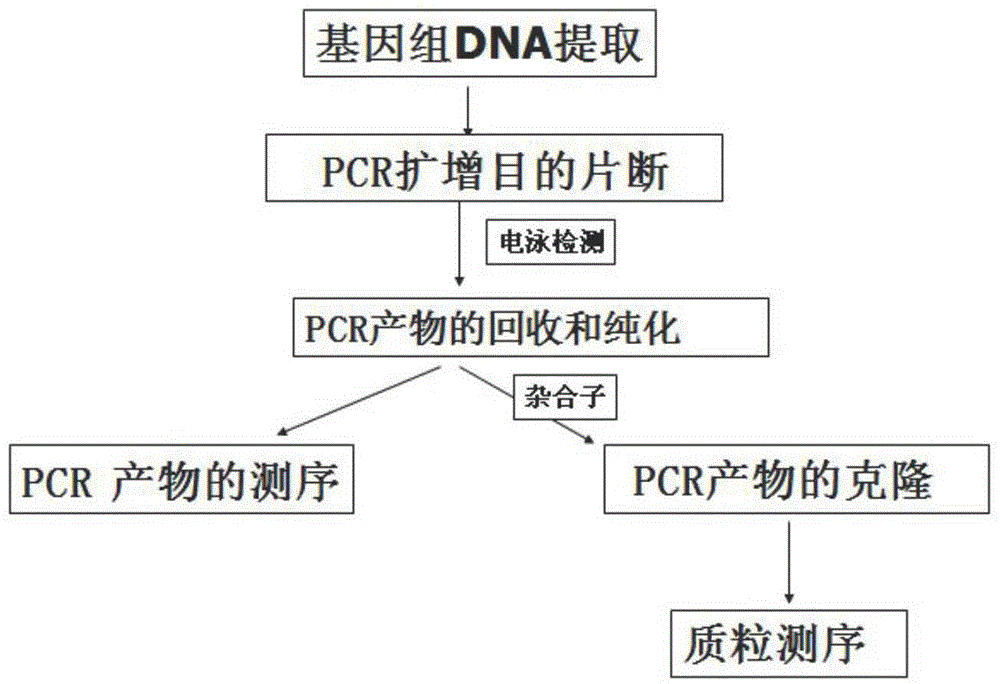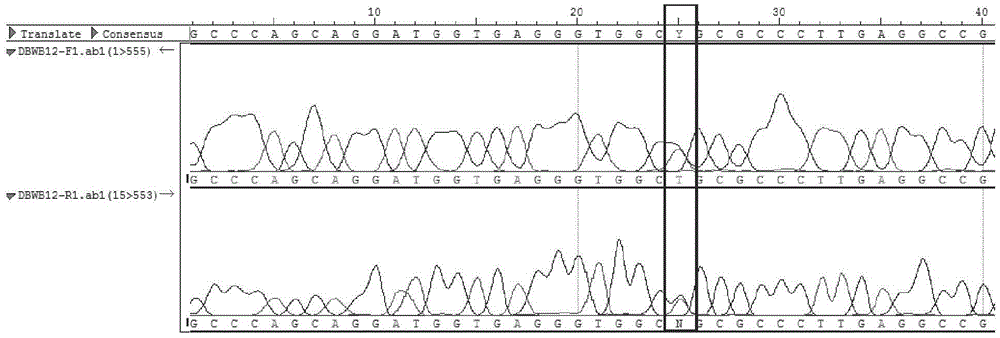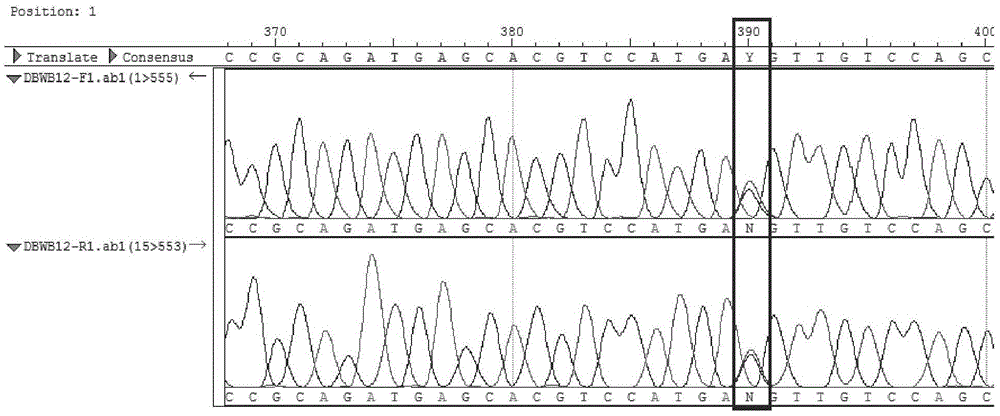SNP (single nucleotide polymorphism) marker and method for identifying MC1R (melanocortin receptor 1) genes of pig breeds and colors of pig breeds as well as application
A marking method and hair color technology, applied in biochemical equipment and methods, DNA/RNA fragments, recombinant DNA technology, etc., can solve problems such as complex genetic basis, and achieve simple operation, low cost, and high efficiency
- Summary
- Abstract
- Description
- Claims
- Application Information
AI Technical Summary
Problems solved by technology
Method used
Image
Examples
Embodiment 1
[0039] Example 1 is used to detect the SNP marker method of pig coat color gene MC1R
[0040] Step 1. Genomic DNA extraction
[0041] Genomic DNA was extracted from the blood or tissues of different domestic pig breeds and wild boar by conventional phenol / chloroform method.
[0042] Step 2, PCR amplification
[0043] Primers were designed according to the published sequence of porcine MC1R in Genebank:
[0044] Forward primer MC1RF1 (5'-ACCTGCACTCGCCCATGTACT-3'), the nucleotide sequence of which is shown in SEQ ID NO.3;
[0045] Reverse primer MC1RR1 (5'-GAGAGGTGCAGGAAGAAGGGT-3'), the nucleotide sequence of which is shown in SEQ ID NO.4;
[0046] A 472bp DNA sequence in the coding region of pig MC1R was amplified with primers MC1RF1 and MC1RR1;
[0047] The TaqDNA polymerase and Buffer used are products of Dalian Bao Biology Co., Ltd.
[0048]
[0049]
[0050] Note: In order to eliminate the primer dimer need to add DMSO2.5μl.
[0051] The above PCR reaction reage...
Embodiment 2
[0131] Example 2 Detection experiment of Chinese domestic pig and Chinese wild boar samples
[0132] A total of 143 Chinese domestic pigs and 70 Chinese wild boars were collected in this experiment (see Table 4 and Table 5). Chinese domestic pig muscle samples were collected from local breeds from all over the country. Chinese wild boar samples were collected from various zoos and protected areas.
[0133] Table 4 Total sample situation
[0134]
[0135] Table 5 The measured pork sample information table
[0136]
[0137]
[0138] The experimental results are shown in Table 10. M1-M5 belongs to MC1R*5 haplotype, M6-M12 belongs to MC1R*1 haplotype, M13 corresponds to MC1R*4 haplotype, M14 corresponds to MC1R*3 haplotype, M15- M19 belongs to the MC1R*2 haplotype. In the 286 sequences of 143 individuals of Chinese domestic pigs that we determined, a total of six haplotypes were found, among which two heterosense mutations (V92M, L99P) occurred in the three haplotypes...
Embodiment 3
[0142] Example 3 Detection Experiment of Chinese Aboriginal Domestic Pig and Foreign Pig Breed Samples
[0143] Three European commercial pig breeds were collected in this experiment: 10 Landraces, 6 Durocs and 1 Yorkshire (samples provided by Yunnan Academy of Animal Husbandry and Veterinary Medicine). The collected Chinese domestic pig samples were the same as in Example 1 (see Table 5).
[0144] Table 6 Total sample situation
[0145]
[0146] Table 7 The measured pork sample information table
[0147]
[0148] As shown in Table 10, there are four haplotypes M1, M13-14 and M17 in 34 sequences of 17 individuals of three European domestic pig breeds. Although limited by the number of individuals, it can be found that the European domestic pig Breeds carry heterosynonymous mutations different from Chinese domestic pigs.
[0149]Duroc pigs are mainly of M13 haplotype, and the two heterosense mutations (A161V, A240T) of this haplotype are both recessive red haplotypes (...
PUM
 Login to View More
Login to View More Abstract
Description
Claims
Application Information
 Login to View More
Login to View More - R&D
- Intellectual Property
- Life Sciences
- Materials
- Tech Scout
- Unparalleled Data Quality
- Higher Quality Content
- 60% Fewer Hallucinations
Browse by: Latest US Patents, China's latest patents, Technical Efficacy Thesaurus, Application Domain, Technology Topic, Popular Technical Reports.
© 2025 PatSnap. All rights reserved.Legal|Privacy policy|Modern Slavery Act Transparency Statement|Sitemap|About US| Contact US: help@patsnap.com



